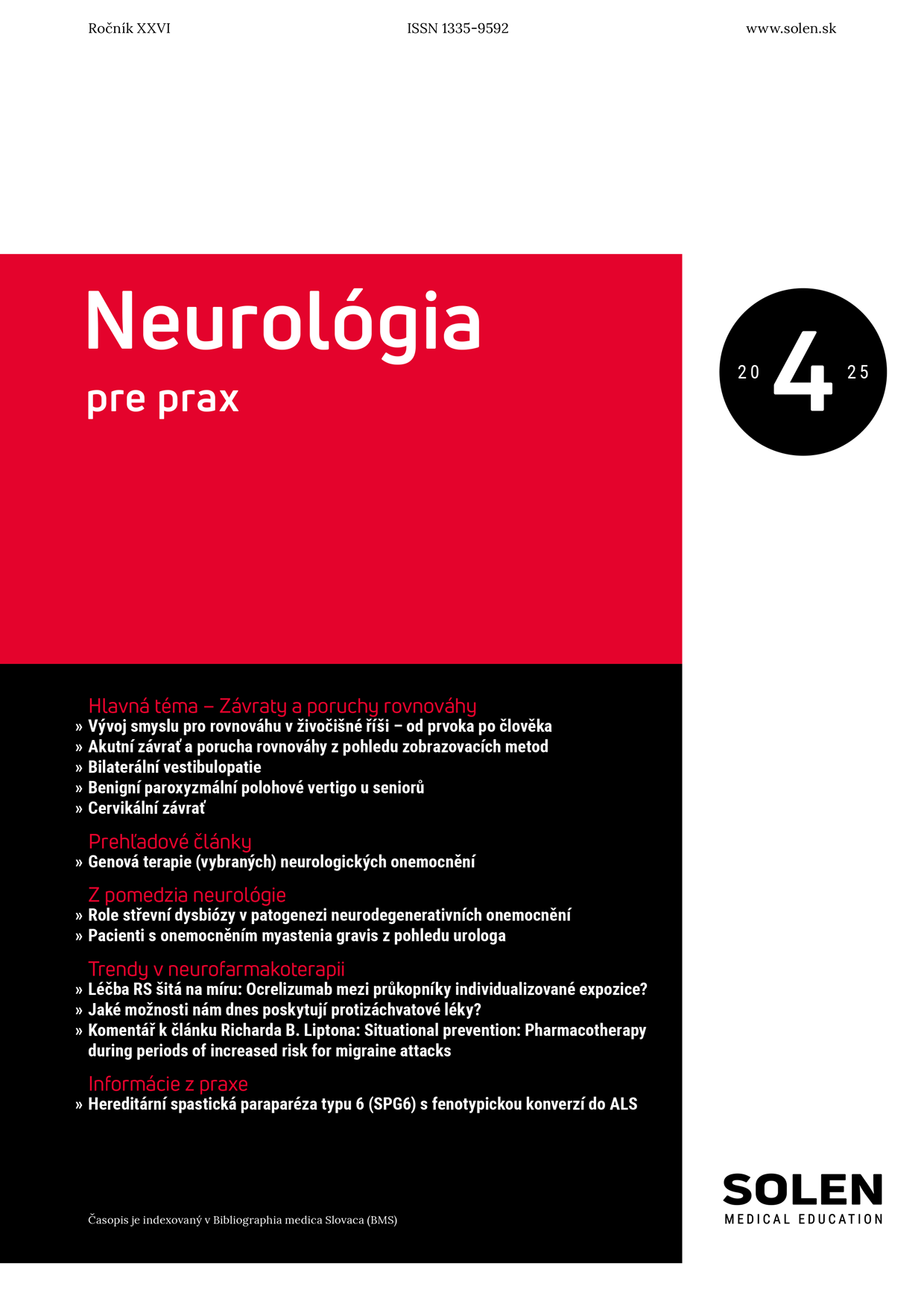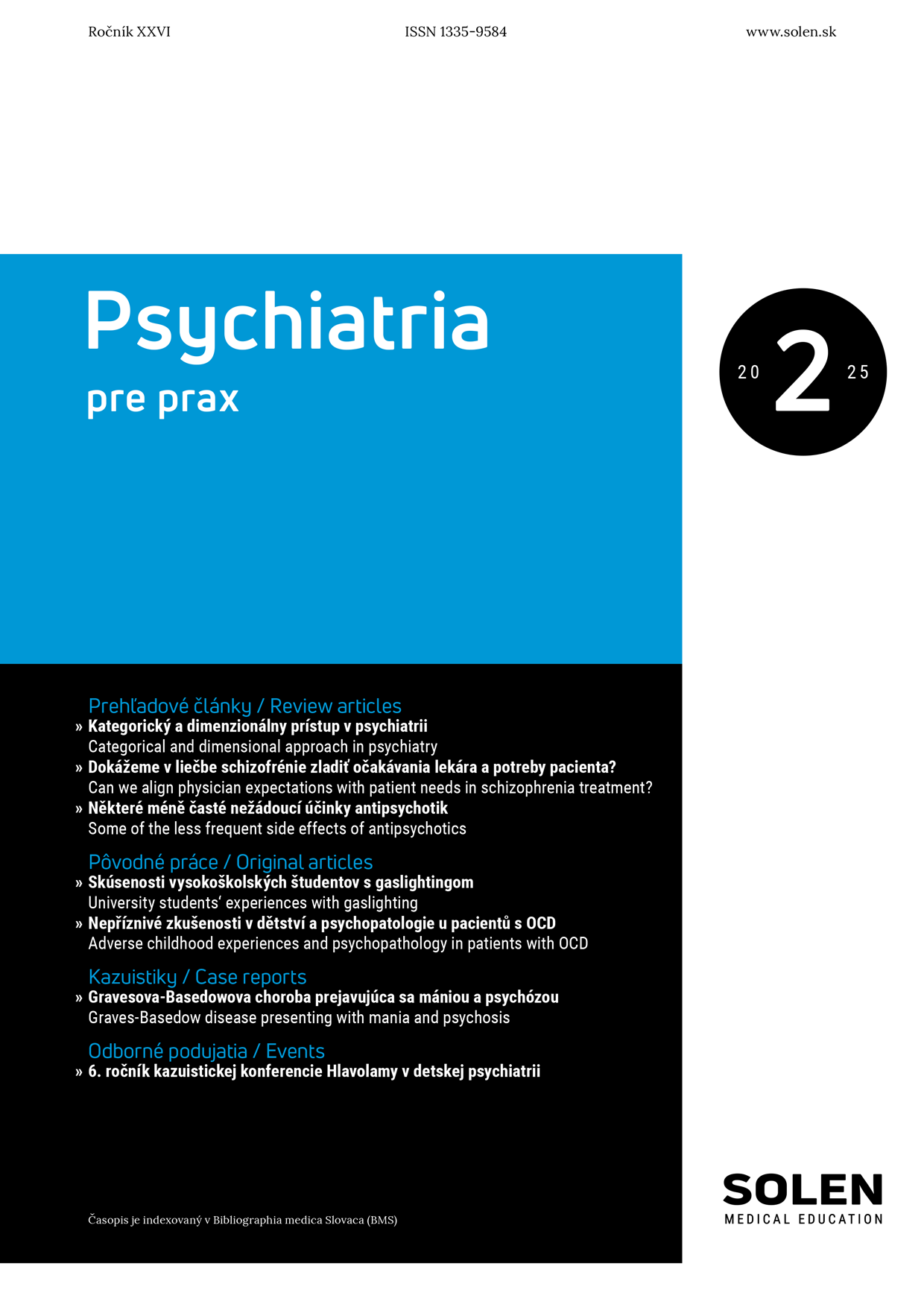Anestéziológia a intenzívna medicína 1/2017
Pruritus po anestézii
MUDr. Juraj Šafran, MUDr. Anton Turčan, MUDr. Ľubomíra Romanová, PhD.
Úvod a ciele: Pruritus patrí medzi časté komplikácie celkovej, ale aj regionálnej anestézie. Ide o nepríjemný lokalizovaný alebo generalizovaný pocit na koži, slizniciach alebo spojovkách, ktorý núti pacienta uľaviť si škriabaním alebo trením. Pacienti ho vnímajú ako obťažujúci symptóm. Prevencia a liečba pooperačného pruritu je stále neuspokojivá. Metodika: Prehľad odbornej literatúry dostupnej v internetových databázach zaoberajúcej sa problematikou pooperačného pruritu. Výsledky: Incidencia pruritu po anestézii varíruje v štúdiách v závislosti na skupine pacientov a typu operácie od 30 až do 100 %. Najviac náchylné sú tehotné a ženy v tesnom popôrodnom období. Za vznik pruritu v pooperačnom období bývajú často zodpovedné opioidy, ale môžu to byť aj iné lieky použité v priebehu anestézie, akými sú niektoré antibiotiká, hydroxyetylškroby, chlórprokaín či steroidy. Pruritus býva taktiež sprievodným javom mnohých systémových ochorení. Záver:Pooperačný pruritus môže byť následkom anestéziologického postupu, ako napr. používania potentných opioidov, najmä intratekálnou či epidurálnou cestou, ale môže byť spojený aj s koexistujúcim ochorením pacienta. Sú známe údaje o možných mechanizmoch vzniku pruritu, ale dostatočná prevencia a liečba stále chýba. V liečbe sa skúšalo množstvo preparátov, avšak výsledky sú rozporuplné. Najkonzistentnejšie dáta vychádzajú zo štúdií pre liečbu opioidmi indukovaného pruritu. Odporúčajú antagonisty µ-opioidných receptorov, kombinované opioidné agonisty-antagonisty, antagonisty sérotonínových 5-HT 3-receptorov a antagonisty dopamínových D2-receptorov.
Kľúčové slová: pooperačný pruritus, anestézia, prevencia, liečba
Pruritus after anaesthesia
Backround and objectives:Pruritus is very common complication of general as well as regional anaesthesia. It is unpleasant localized or generalized sensetion on skin, mucous membranes or conjuctives which forces patient to relieve himself by schratching or friction. Postoperative itching is sensed by patients like really terrible symptom. Unfortunatelly postoperative pruritus prevention and treatment remains still unsatisfacory. Methods: Review of scientific literature which is available on internet databases interested in postoperative pruritus issues. Results:Postanaesthetic pruritus incidence fluctuate in trials in dependence on pacient group and type of surgery from 30 to 100%. The most susceptible are pregnant women or women after delivery. Opioides are ussually responsible for genesis of ithcing in the postoperative period. But there are many of drugs used during anaesthesia which can be responsible for pruritus too, for example some antibiotics, hydroxyethylstarches, chlorprocain or steroides. Pruritus is also common symptom of many system illness. Conclusion: Postoperative pruritus may be result of anaesththic technique, like for example using of potent opioides, especially by intrathecal or epidural route, but it can also be associated with coexisting illness of patient. There are many of potential mechanism of genesis theories, but sufficient prevention and treatment is still lacking. A lot of drugs has been tried for treatment of postoperative pruritus, but results are conflicting. The most consistent data from trial for treatment of opioid induced itching testify for μ-opioid receptor antagonists, combines opioid agonists-antagonists, 5-HT 3-receptor antagonists and D2-receptor antagonists.
Keywords: postoperative pruritus, anaesthesia, prevention, treatment

















